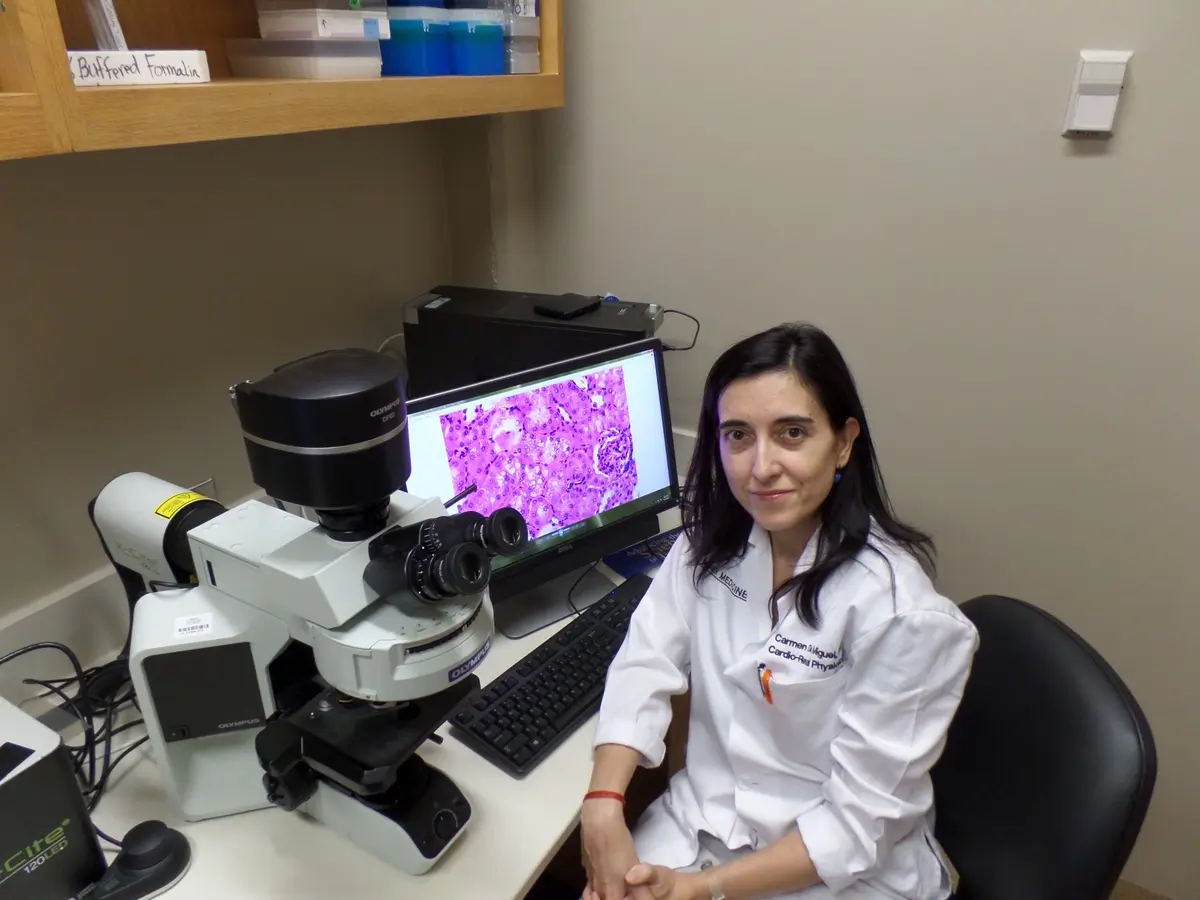6 Month Update
Our studies have identified a novel pathway consisting of two receptors, LGR4 (Leucine-rich repeat-containing G-protein-coupled receptor 4), a positive, and RANK (Receptor Activator of NFκB), a negative regulator, whose stoichiometry is critical for maintaining normal β-cell health.
LGR4 is the fourth most abundant GPCR in human islets, but its role in β-cells remains unclear. LGR4 shares a common ligand, (RANK) ligand (RANKL), with RANK, a receptor that we have shown to negatively impact β-cell health by inhibiting proliferation and function and promoting cell death. We hypothesized that LGR4 positively regulates β-cell health by suppressing RANK.
We evaluated Lgr4 and Rank expression in mouse and human islets under acute (proinflammatory cytokines) and chronic stress conditions (high-fat diet, db/db mice, NOD/Ltj, and aging). We performed in vitro loss and gain-of-function studies in primary rodent and human β-cells and assessed mechanisms using the rodent INS1 cell line. Using Lgr4Fl/Fl and double Lgr4Fl/Fl Rank Fl/Fl x Ins1-Cre mice, we generated β-cell-specific conditional knockouts (cko) to test the roles of LGR4 and its interaction with RANK in vivo.
Lgr4 mRNA levels decreased under stress (Fig 1A-B), while Rank expression increased (Fig 1C). In vitro, Lgr4knockdown reduced β-cell proliferation and survival, whereas overexpression protected against cytokine-induced death. Rank overexpression led to increased β-cell death. Mechanistically, LGR4 protects β-cells by inhibiting the RANK-TRAF6 interaction and subsequent NFκB activation. In vivo, Lgr4cko mice exhibited normal glucose homeostasis but decreased proliferation (Fig 1D) with increased β-cell death, observed only in females (Fig 1E). Aging, further impaired β-cell homeostasis, causing female Lgr4cko mice to become glucose intolerant (Fig 1H-J). On the other hand, double (Lgr4/Rank) cko mice rescued the impaired phenotype observed in the single Lgr4cko mice, with normal glucose and β-cell homeostasis in young, aged, male, or female mice (Fig 1K-M). This study highlights the critical interplay between LGR4 and RANK in regulating β-cell health ((bioRxiv)). Our results show that LGR4-RANK stoichiometry is critical to maintain β-cell health under basal and stress conditions. Blocking RANK and boosting LGR4-mediated effects holds therapeutic potential to treat and prevent T1D. Our findings have had a direct clinical impact, in that Dr. Vasavada is a PI in a clinical trial aiming to test efficacy of the FDA-approved osteoporosis drug, Denosumab, which is a RANKL/RANK inhibitor in the population of patients affected with T1D. The ultimate goal of this study is to repurpose Denosumab and use it clinically against T1D.
Project Description
In type 1 diabetes (T1D) the body’s own immune system attacks and destroys the insulin-producing cells (β-cells) in the pancreas. This leads to a lack of insulin, which is essential for regulating blood sugar levels. We now know that stress experienced by β-cellsplays a key role in triggering the body’s immune response in T1D. Therefore, identifying molecules that reduce β-cell stress and improve their health would have a significant positive impact on T1D treatment and patients’ outcome.
The aim of my project is to investigate the therapeutic potential of a protein called LGR4-ECD (Leucine-rich repeat-containing G protein-coupled receptor 4-extracellular domain). We believe LGR4-ECD acts by blocking a pathway that we have shown is bad for β-cell health as it increases death, decreases replication and function, in the context of T1D. We will test LGR4-ECD efficacy against stressors related to T1D in culture and in animal models. Ultimately, by better understanding how LGR4-ECD can improve β-cell health, my research project aims to establish new treatments for T1D. The hope is that our candidate molecule LGR4-ECD could help preserve β-cell health and function (their capability to secrete insulin) to treat T1D.











